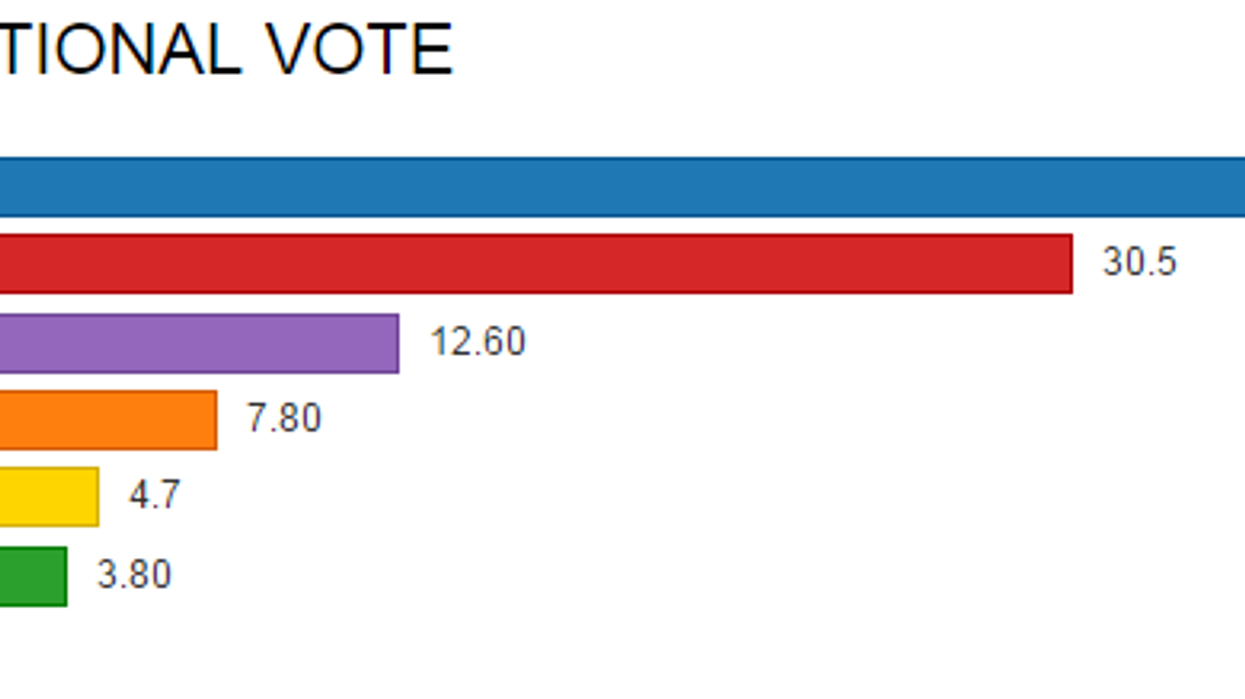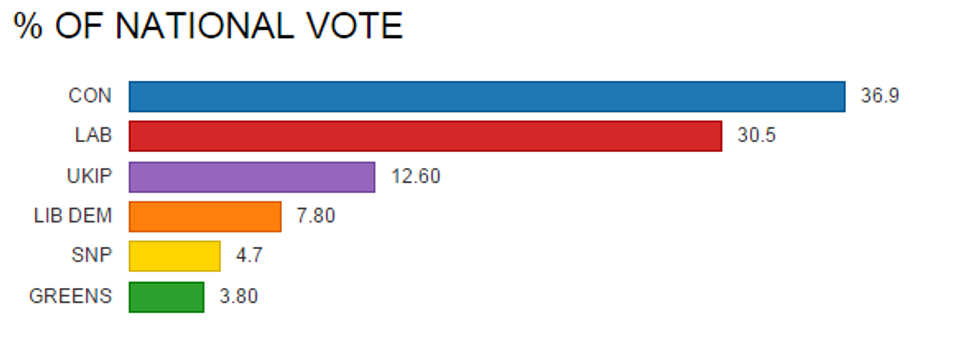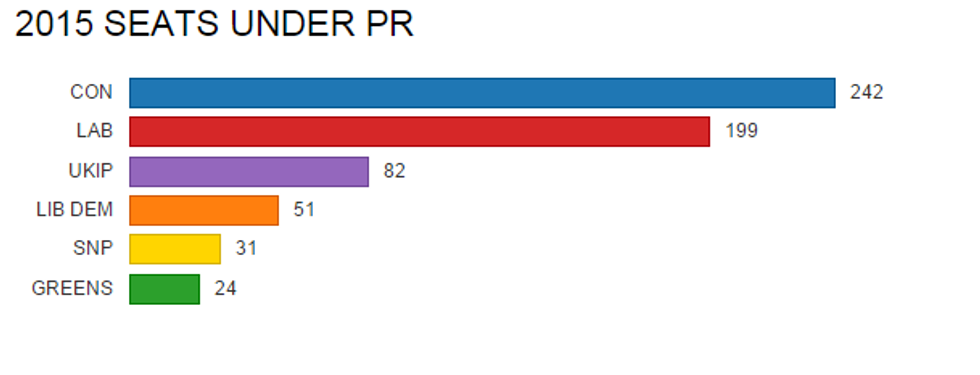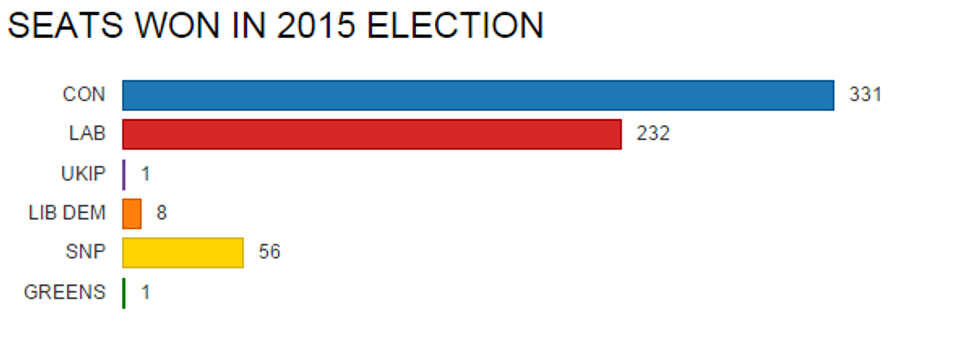News
John Rentoul
May 10, 2015

The apparent perversity of the election result has prompted renewed demands for a change in Britain’s voting system.
Here are the other choices:
1. Alternative Vote
This was the system rejected by the British in the 2011 referendum. Essentially the same as the present system, but it allows voters to number candidates in order of preference. The result would usually be more proportional than first-past-the-post, but could also be less so. Used in Australia, which also has compulsory voting.
2. AV Plus
Proposed by Roy Jenkins, the Lib Dem Grand Pooh-Bah (Paddy Ashdown’s nickname for him), for Tony Blair in 1998. This would involve electing most MPs by AV, but would also elect a sixth of MPs to “top up” under-represented parties in regional groups of constituencies. The results would usually be pretty close to matching the proportion of seats with the proportion of votes cast for parties. Not used anywhere.
3. STV in multi-member constituencies
Called the Single Transferable Vote, which is odd because voters mark their ballot papers in order of preference to elect usually three, four or five MPs for large constituencies. Voters may vote for candidates of different parties. The result is usually roughly proportional, within the constraints of seat sizes. Used for the Northern Ireland Assembly, local councils in Scotland and the Irish Republic.
4. Added Member System
Similar to AV Plus, but it doesn’t use AV to elect MPs in constituencies, and has more MPs elected on top-up lists. A fully proportional system. In the Scottish Parliament, 56 of 129 MSPs are “list members”. In the German Bundestag, half of MPs are list members.
5. List system
People vote for parties, with MPs elected from national party lists, starting from the top of the list, in strict proportion to the votes cast. Used in Israel.
What is wrong with these?
The most important thing to remember is that voters would behave differently under a different system, so you cannot assume that the votes cast last week would represent people’s first preferences if the rules were changed.
That said, advocates of proportional representation ought to recognise that the Tories and Ukip together won 50.6 per cent of the vote in Great Britain (excluding Northern Ireland).
More: Here's how the election results would look under a proportional voting system
Top 100
The Conversation (0)
















